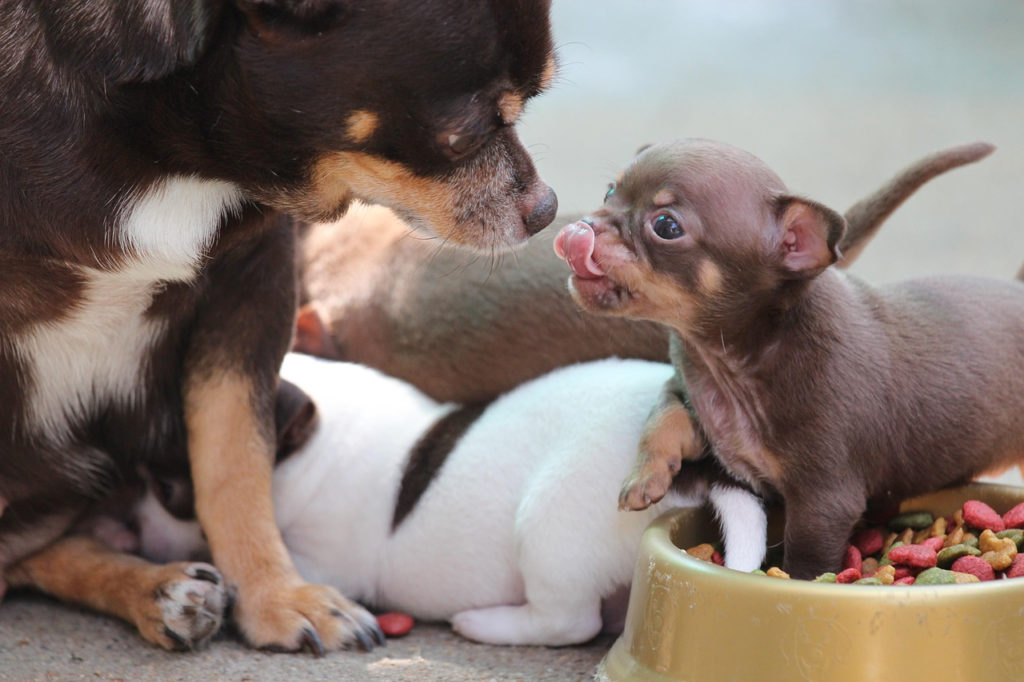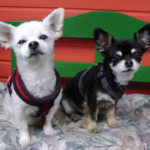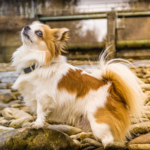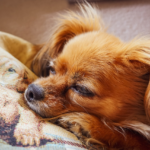Ever thought about teaching your Chihuahua fun tricks like the Shake Paws trick? It’s more than just a cute act. It’s a way to bond with your pet. By using positive training methods, you can make simple commands fun and strengthen your connection.
This guide will show you how to train your Chihuahua. It’s a fun way to improve your bond and keep your dog’s mind active. Let’s start this rewarding journey together!
Introduction to Training Your Chihuahua
Training your Chihuahua is key to being a good pet owner. These tiny dogs are smart and can learn many commands and tricks. Training them helps improve their behavior and strengthens your bond.
Successful training needs patience and positive rewards. Giving your Chihuahua treats for good behavior makes learning fun. Avoid negative methods and celebrate their successes to keep them excited about learning.
Starting your training journey, focus on building a strong bond. A well-trained Chihuahua shows off their skills and feels safe and loved. They become happier in a place where they’re valued and cared for.
The Importance of Bonding Through Training
Training your Chihuahua is a great way to bond with your Chihuahua. It’s not just about learning commands. It’s also about giving your dog mental stimulation for dogs. Training helps you and your dog work together, building trust and better communication.
Using positive training techniques makes training work better. When you give your Chihuahua treats or praise, they learn that following commands is good. This makes them want to learn and join in the training. Training becomes something fun you do together, not a boring task.
Training does more than teach your dog to obey. It makes them feel safe and confident in different places. Training keeps your dog active and gives them the mental stimulation for dogs they need. This helps them stay happy and healthy in their mind and heart.
In short, training is key to a strong bond with your Chihuahua. It teaches important skills that make life better for both of you.
Getting Started with the Chihuahua Shake Paws Trick
Before starting the Chihuahua Shake Paws Trick, prepare the environment and tools for training. The right setup and tools make training fun for both you and your Chihuahua.
Setting Up a Positive Training Environment
A supportive training space helps a Chihuahua learn better. Choose a place that is:
- Quiet – Keep it free from noise and movement.
- Comfortable – Make sure it’s cozy for your dog.
- Familiar – Use a space your Chihuahua knows well for confidence.
This setup helps your Chihuahua focus during training. Focus is key for learning the Shake Paws Trick.
Gathering Your Training Tools
Having the right tools makes training easier. You’ll need:
- High-value treats – Choose small, tasty snacks your Chihuahua loves.
- Clicker (optional) – Use this to mark good behavior with a sound.
- Paw graphic (optional) – This helps teach the shaking paws concept.
| Training Tool | Purpose | Example |
|---|---|---|
| High-value treats | Motivates your Chihuahua to perform the trick | Small pieces of chicken or cheese |
| Clicker | Marks the exact moment of desired behavior | Traditional animal training clicker |
| Paw graphic | Visual aid for understanding the trick | Printed image of a paw |
Setting up a positive training space and using helpful tools lays a strong foundation for obedience training. It makes your Chihuahua feel at ease and rewards them well, improving the training process.
Basic Obedience Commands for Success
Starting with basic obedience commands is key for successful dog training. Commands like “Sit” and “Stay” are the foundation for more complex tricks, including the fun “Shake Paws” trick. These commands make your Chihuahua a well-behaved pet and strengthen your bond.
Essential Commands: Sit and Stay
Teaching your Chihuahua “Sit” and “Stay” sets the stage for a well-behaved dog. Here’s how to do it:
- Start with short training sessions to keep your dog engaged.
- Use a treat to guide your dog into a sitting position. When your Chihuahua sits, immediately reward them.
- Once they master “Sit,” introduce “Stay” by asking them to sit first, then slowly back away while rewarding them for remaining in place.
Using Positive Reinforcement
Positive reinforcement makes dog training more effective. Reward your Chihuahua with treats, praise, or playtime right after they do what you ask. This encourages them to do it again. Always reward them for following commands to make sure they understand.
| Command | Purpose | Tips for Teaching |
|---|---|---|
| Sit | Establishes basic control | Use a treat to guide. Reward immediately. |
| Stay | Encourages patience and self-control | Progress slowly. Reward for remaining in place. |
Step-by-Step Guide to Teaching the Shake Paws Trick
Teaching your Chihuahua the Shake Paws trick is fun and builds a strong bond. It’s a great way to improve your dog’s skills and your relationship. Here’s a simple guide to get you started.
Step One: Hold Your Hand Out
Sit on the floor with your Chihuahua. Hold out your hand, palm up, for them to put their paw on. You might need to touch their paw or guide it gently. This step is important for the trick to work.
Step Two: Building Duration and Consistency
When your Chihuahua puts their paw on your hand, praise them and give a treat. Start with a short time and gradually increase it. It’s important to be consistent and practice often to make the trick stick.
Step Three: Introducing the Verbal Cue
Once your Chihuahua knows to keep their paw on your hand, add a verbal cue. Say “Shake” when they do it, so they connect the word with the action. This makes teaching the trick clear and effective.
Step Four: Practicing with Both Paws
Next, practice with both paws. Guide their left paw to your hand and say “Shake.” Some dogs prefer one paw over the other, so using both helps them learn fully. Keep up the good work, and soon your Chihuahua will love their new trick!
CONCLUSION
Training your Chihuahua to shake paws is not only a fun trick but also a great way to strengthen your bond with your pet. By incorporating positive reinforcement and maintaining a patient, consistent approach, your Chihuahua will quickly learn this charming skill.
This trick can boost your dog’s confidence and make interactions more engaging. Whether you’re looking to entertain friends or simply spend quality time with your Chihuahua, teaching them to shake paws is a rewarding experience. The joy of seeing your pet respond to your commands with enthusiasm will make the effort worthwhile, enriching both your lives.
FAQ
Q: How long does it take to teach my Chihuahua the Shake Paws trick?
A: The time needed varies with your Chihuahua’s personality and training background. With regular practice and positive rewards, many can learn it in a few sessions.
Q: What treats are best for training my Chihuahua?
A: Use small, easy-to-chew treats like soft training treats or tiny cooked chicken. Make sure they’re safe for small breeds to keep training healthy.
Q: Why is positive reinforcement important in dog training?
A: Positive reinforcement makes training fun and strengthens your bond with your Chihuahua. It encourages your dog to do what you want, leading to better learning and confidence.
Q: Can older Chihuahuas learn new tricks like Shake Paws?
A: Yes, older Chihuahuas can learn new tricks. They might need more patience, but with consistent training and positive rewards, they can succeed.
Q: How can training help with my Chihuahua’s behavior?
A: Regular training improves your Chihuahua’s behavior by teaching important commands and keeping their mind active. This reduces anxiety and stops bad behaviors. A trained dog is more obedient and secure.
Q: Should I train my Chihuahua daily?
A: Training should be short and daily for Chihuahuas. Aim for 5-10 minute sessions a few times a day. This keeps them focused and doesn’t overwhelm them. Being consistent helps reinforce what they learn.
Q: What if my Chihuahua doesn’t seem interested in training?
A: If your Chihuahua isn’t interested, try training in a quieter place with fewer distractions. Use better treats and make training fun. Always use positive reinforcement to get them to join in.
Source Links
- No title found – https://www.akc.org/expert-advice/training/how-to-teach-your-dog-to-shake-hands/
- How to Train a Chihuahua to do Easy Tricks – https://wagwalking.com/training/train-a-chihuahua-to-do-easy-tricks
- Easy and Fun Dog Tricks to Train and Bond With Your Dog – https://www.servicedogtrainingschool.org/blog/easy-and-fun-dog-tricks-to-train-and-bond-your-dog





